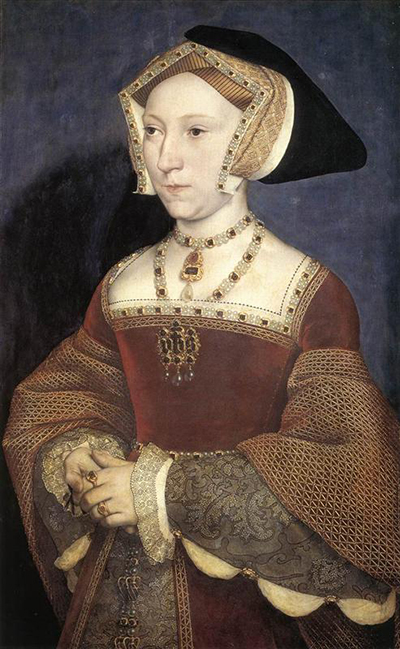Hans Holbein the Younger was a Northern Renaissance artist from Germany who is most famous for his depictions of the English Monarchy in the 16th century. He was famed for his detailed and realistic portrait paintings as well as being a skilled printmaker.
The artist’s fame was built on his strong technical skills as well as the key subjects featured in his work, some of whom can be described as leading political figures in the 16th century. This was a memorable time in English society, which has been discussed more as much as any other in recent years, with Holbein’s portraits helping to bring this history to life in the visual form.
His style was respected for its precision, making portraits of the likes of Henry VIII, Jane Seymour and Anne of Cleves being all the more valuable to historians. The artist was highly regarded as a printmaker, with his woodcuts and engravings covering a wide range of genres, beyond his speciality in portraiture.
Early Life
Hans Holbein the Younger was born in 1497 in Augsburg, modern-day Germany. He and his brother, Ambrosius, would be encouraged into the artistic industry by their father, Hans the Elder, who was a successful portrait painter who had established a large studio from which he could appease a large number of local donors. The two brothers had their earliest training alongside their father but in their late teens would move to Basel in order to find some independence within their lives, as well as seeking alternative artistic influences.
Hans the Younger would not initially work in portraiture and sought to differentiate his oeuvre from his father’s. They would also start their use of woodcuts and engravings whilst in Basel, with this Swiss city having a healthy printmaking industry already established.
By 1517 Hans Holbein would work alongside his father on a number of projects within Lucerne, before traveling briefly to Italy where he studied the work of Andrea Mantegna, amongst others. By 1519 the artist had returned to Basel in what was an important time in both his personal and professional life. Firstly, he married Elsbeth Binsenstock-Schmid, and they would have a child together in the following year (two further children arrived later on).
He also established a large studio which enabled him to take on more commissions and expand his own artistic reputation, hoping to come out from the shadow of his father. Some of the artist’s major projects during this period were murals within The House of the Dance and the Council Chamber of the Town Hall. He would also sketch out designs which craftsmen could turn into stained glass windows, which was a popular art form at that time.
Some of his earliest book designs and illustrations would also appear at this point, including Martin Luther's bible, with this branch of Protestantism spreading quickly through Basel at the time. There was also the use of typography, designing new alphabet fonts as Holbein continues to challenge himself artistically and technically.
First Work in England
The artist chose to move to England in 1526, where he remained until 1528. This was the first of two spells in the country, and followed on shortly after a short period in France, where he had attempted to become a court painter of sorts there as well.
His first time in England brought about a number of impressive portraits, whilst also establishing his reputation within the country, which he would be able to fully exploit on his return visit. He was taken under the wing of Sir Thomas More, and would produce portraits of this English statesman as well as members of his family and other courtiers.
Return to Basel
The artist returned to Basel in Switzerland in 1528, and would remain here until 1532. He felt proud of his success in England and had been paid handsomely for his portraits of high society, enabling to purchase two different properties in Basel. He continued to work within the city and was able to navigate the turbulent politics of this region at the time, always behaving in a pragmatic manner in order to keep competing powers onside.
He further evolved some of the projects that he had been working on prior to his first period in England, and returned to covering many of the Christian themes which were mainly absent in his time abroad. Holbein found fewer opportunities this time round in Switzerland, and so eventually came to the conclusion that he could be more profitable back in England, though would need to tie up arrangements with his new properties in Basel before heading off once more.
Second Spell in England
Hans Holbein returned to England in 1532 and immediately re-positioned himself within the English court. Considerable fractures were appearing within the ruling powers of the country, and the artist chose to move away from those who had initially welcomed him to England first time round. It seemed a shrewd move after Sir Thomas More was executed just a few years later.
This also reminded Holbein of the political tightrope that he was balanced upon whilst working within such turbulent circles. Whilst his depictions of the monarchy remain the most famous, Holbein would produce portraits of a wide variety of subjects during this second spell in England, covering a number of wealthy businessmen, many of whom were based on the continent, but who had connections to England through its various trade routes.
By the mid-1530s, Holbein was officially employed in a permanent capacity as painter to the King and would produce his most famous portraits of Henry VIII during this time. Another classic piece, often referred to as The Ambassadors came at around this time as well, marking the peak of Holbein’s career. Additionally, there were portraits of Jane Seymour and Anne of Cleves, as well as Christina of Denmark, having been well acquainted with the late Anne Boleyn prior to this. The artist continued to work right up until his death, taking on some private commissions for English Dukes and related members of high society whilst fulfilling his role as court painter.
Death
Hans Holbein the Younger died in the autumn of 1543, at the age of 45. The artist was buried in England, but the precise location is unknown. As he fell ill to infection, a will was carried out in order to settle any debts and provide for his children.
Legacy
Hans Holbein the Younger remains most famous for bringing the eminent qualities of the Northern Renaissance to the court of Henry VIII. He also helped to raise the technical standards of book illustration and printmaking in his native Germany and surrounding regions.
His portraits of the infamous monarch himself, as well as a multitude of his queens, plus other key figures such as Erasmus, Thomas More, and Thomas Cromwell would ensure that Holbein’s name would remain prominent in the centuries that followed his death, even as artistic tastes across Europe continued to change. Indeed, many of those knowledgeable on the era of the English Tutors may be unaware of the number of Holbein portraits that they may have observed during their studies.
The artist’s portraits could provide a realistic image of his subjects, whilst also getting across their own unique personalities, whilst also managing to avoid upsetting the sitter. This was a difficult balance to strike, and in the politically charged times of the English Tudors, Holbein was somehow able to retain his popularity.
His technical ability could not be doubted, and his work within England would help to raise artistic levels in the country over the next few centuries. Indeed, portraiture would become a major genre here, with others evolving the art form onwards, having potentially learnt much from this Swiss-German’s own contributions. His work in other genres was also technically impressive, particularly the religious depictions from his time in Basel, and he was additionally able to tap into the growing movement of Lutheranism spreading in this region at the time.




